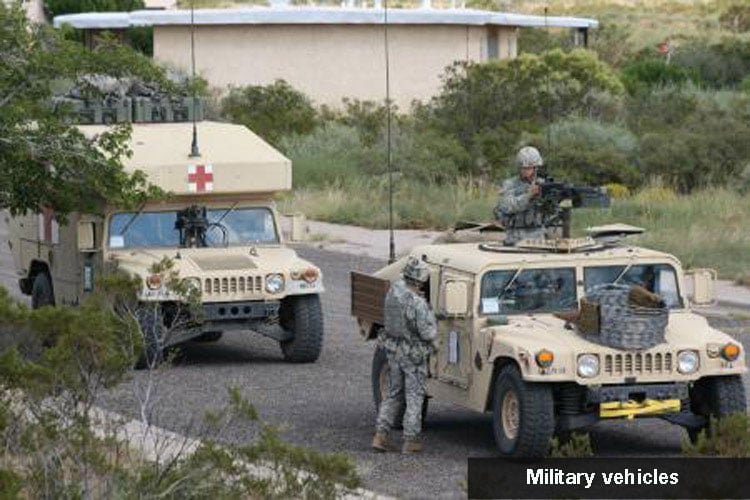AFRL Cyber Center To Train How To Hack Sensors (Think IoT)
Posted on

The Playas Training and Research Center (PTRC) already hosts military training at its various ranges, photo courtesy of PTRC
WASHINGTON: The Air Force Research Laboratory (AFRL) has inked a deal with the New Mexico Institute of Mining and Technology to develop a new training environment for testing cyber and electronic warfare attacks, which the Air Force sees as eventually becoming “an operational range for DoD cyber-kinetic and multi-domain operations.”
The new cyber training environment is sharply focused on understanding how sensors embedded into devices that are connected via the Internet of Things (IoT) might be manipulated, both to protect US systems and to attack those of adversaries.
The sole source contract, worth about $93 million, will support research, development and operation of the Playas Electronic Attack & Cyber Environment in Playas, New Mexico through October 2026. According to an Air Force announcement yesterday, the contract “will define, develop and deploy cyber electronic warfare (EW) capabilities for research and development, evaluation, test and training in support of employment of cyber EW effects.”
The Playas Training and Research Center, where the cyber training would take place, already is heavily involved with military training. It boasts a wide variety of training ranges, including six that mimic villages in places such as Afghanistan and Iraq, and an “urban” range that simulates a small American town.
The notification of the planned contract, provided by an Air Force spokesman to Breaking D today, is more specific about Air Force aims under the “Cyber-Physical Research and Testing for Distributive Sensing” effort.
Of particular importance to AFRL is “research and development of the physics and phenomenology in regards to the interface between the physical world, i.e. objects and the environment, and the cyber realm, i.e. networked devices.” In other words, AFRL wants to experiment and train airmen on how to hack systems to create real-world affects, such as shutting down a power station or blowing up a vehicle.
Further, the New Mexico facility will focus specifically on “techniques by which objects and events can be sensed or manipulated via transducers and kinetic actuators on cyber-connected devices.” Transducers are devices that convert energy from one form to another, such as thermometers, microphones and antennas. Actuators are machine parts that move something — such as opening a valve — and require both an energy source and a control signal of some sort.
The training also needs to help Air Force cyber warriors distinguish between faulty parts, signs of regular wear and tear, and hacking by adversaries.
The location at the university, rather than at an Air Force facility, is necessary, according to the notification, because “there are limited test and training opportunities for employment of cyber and EW effects since current military operating ranges are overscheduled or unavailable, and do not possess credible cyber system capabilities to support regular use by cyber and EW customers.”
It further explains: “The facilities and capabilities will include wired and open-air communications and network infrastructure, representative worldwide physical infrastructure, and specialized facilities to support test, training, and operations. The effort will bring together warfighter requirements, hardware, software, expertise, and best practices to create a reconfigurable and realistic cyber-kinetic environment and range complex.”
Expanding partnerships with universities and outside researchers is one of the goals of the “Air Force Science and Technology Strategy for 2030,” AFRL chief Maj. Gen. William Cooley told Breaking D during the 2019 Air Force Association meeting in mid-September.
Subscribe to our newsletter
Promotions, new products and sales. Directly to your inbox.
